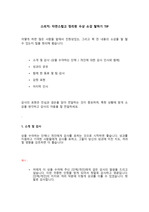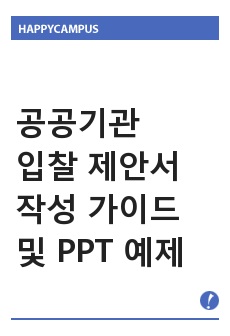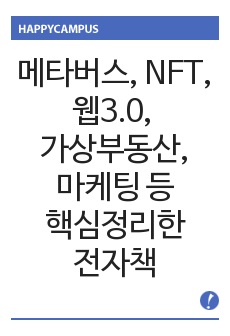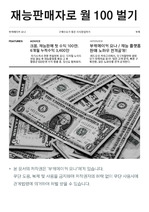THE ROLE OF NARRATIVE TRANSPORTATION AND STYLE OF PROCESSING IN LUXURY BRAND STORYTELLING
* 본 문서는 배포용으로 복사 및 편집이 불가합니다.
서지정보
ㆍ발행기관 : 글로벌지식마케팅경영학회(GFMC)
ㆍ수록지정보 : Global Marketing Conference
ㆍ저자명 : Heejin An, Minjung Park
ㆍ저자명 : Heejin An, Minjung Park
영어 초록
Luxury consumers are highly social online, and with approximately 80 percent of luxury shoppers using social media on a monthly basis (Mckinsey & Company, 2015), the experience luxury brands provide on social networking services (SNS) becomes imperative. Interaction through social streams is about building a relationship with people who may continue to use the luxury product for the next 25 years (The Guardian, 2015). Hence, from magazines to smartphones, luxury brands are seeking new opportunities to communicate with their customers. Brands such as Burberry and Gucci are becoming increasingly active by uploading visuals, narratives, and films that represent their brand, and others are slowly following suit. Although various contents are now being posted online, when it comes to luxury brands, what separates them from others is the rich and unique brand heritage (LinkedIn, 2015; Mckinsey & Company, 2015). Despite this strength, it is a not implemented effectively as a strategy (The Guardian, 2015). In this study, we want to emphasize the need for luxury brands to go digital and to spread their brand stories as a form of advertisement.Stories in advertising and their effects on consumer behavior has been dealt by previous research (Deighton, Romer, & Mcqueen, 1989; Escalas, 2007; Escalas, 2004; Wang & Calder, 2006). Deighton, Romer, and Mcqueen (1989) found that dramatization influenced viewers’ processing to become more empathetic than argumentative, which made dramatized commercials more persuasive than argument-oriented ones. Escalas (2004) showed that narrative advertisement processing is positively correlated with brand attitude and behavioral intention and that narratively structured advertisements persuade others through the experience known as narrative transportation. This experience has been explained by Green and Brock (2000) as “a convergent process where all mental systems and capacities become focused on events occurring in the narrative.” Narrative transportation theory explains the process of being lost in a story and that it takes place when a consumer experiences a feeling of stepping into a world stimulated by narratives due to the empathy with the characters and imagination of the story plot (Laer, Ruyter, Visconti, & Wetzels, 2014). This process can be effective in changing attitudes and beliefs of individuals who read stories (Green & Brock, 2000). For luxury brands, brand heritage can be transformed into stories that can transport readers to other worlds, and this can affect consumer attitudes, intentions, and behaviors (Laer, Ruyter, Visconti, & Wetzels, 2014). This experience is what this study pursues to delve into and understand.
참고 자료
없음태그
"Global Marketing Conference"의 다른 논문
 THE ROLES OF GREEN PACKAGING IN UGLY FOOD PURCHASE INTE..22페이지
THE ROLES OF GREEN PACKAGING IN UGLY FOOD PURCHASE INTE..22페이지 THE IMPACT OF INDUCED AWE ON ETHICAL TOURIST BEHAVIORS5페이지
THE IMPACT OF INDUCED AWE ON ETHICAL TOURIST BEHAVIORS5페이지 A BIBLIOMETRIC ANALYSIS OF SPIRITUAL TOURISM RESEARCH15페이지
A BIBLIOMETRIC ANALYSIS OF SPIRITUAL TOURISM RESEARCH15페이지 SOCIAL NETWORK ANALYSIS AND RESPONSE TIME TESTING: CONS..11페이지
SOCIAL NETWORK ANALYSIS AND RESPONSE TIME TESTING: CONS..11페이지 THE EFFECTS OF PARA-SOCIAL INTERACTION ON ONLINE CELEBR..3페이지
THE EFFECTS OF PARA-SOCIAL INTERACTION ON ONLINE CELEBR..3페이지 THE INFLUENCE OF OPINION LEADERS ON DAILY DEALS USER’S ..3페이지
THE INFLUENCE OF OPINION LEADERS ON DAILY DEALS USER’S ..3페이지 HOW IMMERSIVE RETAILING AFFECTS CONSUMERS’ URGE TO BUY:..6페이지
HOW IMMERSIVE RETAILING AFFECTS CONSUMERS’ URGE TO BUY:..6페이지 KEY TO SUPERSTARDOM IN A GLOBALISED MARKET: THE ROLE OF..6페이지
KEY TO SUPERSTARDOM IN A GLOBALISED MARKET: THE ROLE OF..6페이지 A POST-PANDEMIC LOOK AT TOURISTS’ PERCEIVED COOLNESS OF..4페이지
A POST-PANDEMIC LOOK AT TOURISTS’ PERCEIVED COOLNESS OF..4페이지 EXTRACTING OFFLINE RETAIL SHOPPING PATTERNS: OLLABORATI..5페이지
EXTRACTING OFFLINE RETAIL SHOPPING PATTERNS: OLLABORATI..5페이지


















